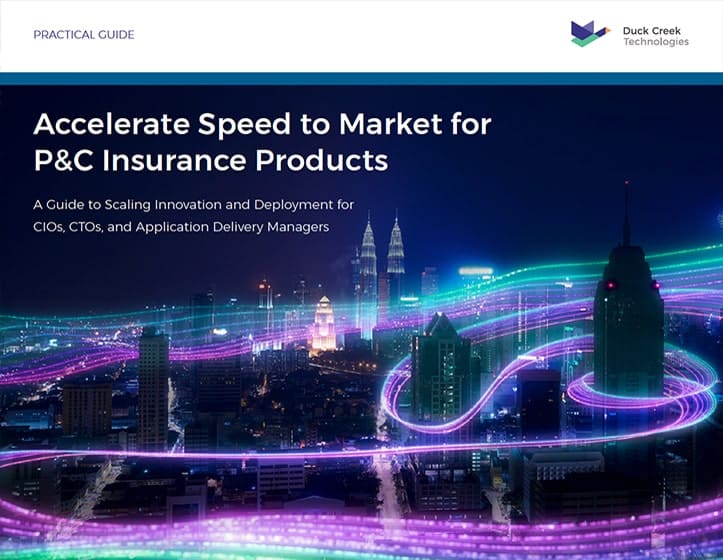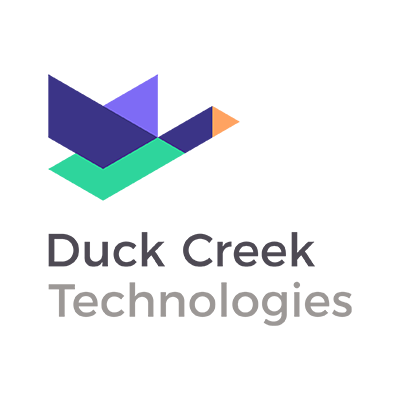The pressure is real. P&C insurance carriers are being asked to deliver more—faster, smarter, and leaner—while navigating a landscape riddled with rising expectations, social inflation, and unprecedented catastrophe losses. Even strong performers are feeling the squeeze.
For carrier executives, efficiency is no longer a goal—it’s a lifeline.
This blog dives into 10 transformative technology trends reshaping the P&C industry. Each one offers a tangible route to operational efficiency, cost reduction, and competitive edge. If these aren’t on your radar, your strategy may already be falling behind.
1. Predictive Analytics: Core to Underwriting, Claims, and Fraud Detection
Predictive analytics is used by many insurers to collect a variety of data to help them understand and predict customer behavior. However, there are new ways it can be utilized to improve accuracy of data.
In fact, a recent Capgemini report found that predictive analytics is central to underwriting transformation, helping carriers connect data dots, unlock actionable insights, and drive profitability. (Capgemini: World Property and Casualty Insurance Report, 2024)
In 2026, insurance companies can use predictive analytics for:
- Pricing and risk selection
- Identifying customers at risk of cancellation
- Identifying risk of fraud
- Triaging claims
- Identifying outlier claims
- Anticipating trends
Use Case: Chubb’s Prevention Services with IoT and Predictive Analytics
Chubb Insurance effectively combines Internet of Things (IoT) and predictive analytics to anticipate and mitigate risks. By continuously monitoring environmental factors through IoT devices, they can predict potential property damage. This proactive approach enables them to offer personalized premiums and helps policyholders avoid costly incidents.
2. Artificial Intelligence (AI): AI, Machine Learning, and Agentic AI
Artificial intelligence is no longer a futuristic concept—it’s here and it’s a competitive advantage. In 2026 and beyond, P&C insurers aren’t just asking what AI is—they’re asking what AI, Machine Learning, and Agentic AI can do for them. And the answer is clear: for carriers focused on profitability and scale, AI isn’t just a tool—it’s a strategic lever. The question isn’t whether to adopt it, but how fast you can deploy it to unlock measurable ROI.
In fact, McKinsey & Company outlines how AI is expected to transform the insurance industry by shifting from a “detect and repair” model to a “predict and prevent” approach. Fundamentally changing operations for brokers, consumers, and other stakeholders. (Insurance 2030—The Impact of AI on the Future of Insurance, 2023)
In 2026, insurance companies can use AI for:
- Real-time intelligence embedded directly into your workflow.
- Faster, smarter decisions across your business, where and when it matters most.
- Real-time scoring across rating, underwriting, and claims.
- Automated routing, predictive billing, and task prioritization workflows.
- Automate claims fraud detection and triage.
- Personalize customer experiences for superior service.
Ready to move beyond the hype and harness AI for tangible results?
See how innovative tech is helping insurers future-proof and grow.
3. Loss Control Tech: The Quiet Driver of Profitability
Not long ago, loss control was a reactive, compliance-driven function—focused narrowly on the riskiest 10% of policyholders. That limited scope left a blind spot across the broader book of business, missing opportunities to proactively manage risk and strengthen customer relationships.
In 2026, that model is being replaced. Imagine a world where every action your risk team takes doesn’t just solve a problem—it fuels smarter underwriting, reduces claims frequency, and deepens customer trust. That’s the power of modern loss control technology.
In fact, Datos Insights identified loss control as a top modernization priority for P&C carriers due to its direct impact on combined ratios, premium optimization, and customer experience. Their experts went on to site that modern systems allow carriers to collect risk data across 100% of policyholders, not just the riskiest 10%. (Datos Insights: The Big Value of Loss Control & Why it Should Be Your Next Function to Modernize, September 2023)
Use Case: West Bend Insurance Improves Pricing Accuracy
West Bend Insurance reduced administrative support time by 60% and increased overall report quality from an average 85% to 92%. With access to quality data on policyholder risks, cross-functional teams across the organization could now make informed decisions on account selection and improve pricing accuracy—and get to market faster.
4. Reinsurance Platform: From Financial Safeguard to Strategic Advantage
In 2026, reinsurance modernization is no longer optional—it is a competitive advantage. From reducing costs and claims leakage to improving recoverables and capital efficiency, today’s systems empower carriers to make faster, smarter decisions with real-time insights and transparent auditability.
In fact, Celent emphasized the strategic value of reinsurance platforms for flexible and full financial control, real-time visibility, and compliance support. (Celent, Ceded Reinsurance Solutions: Global Edition, 2023)
Use Case: QBE Boosts Reinsurance Accuracy & Speed
QBE Insurance Group Limited implemented a centralized system for ceded and assumed reinsurance, enhancing efficiency through automation and achieving global consistency. As a result, they improved the accuracy of reinsurance calculations and automated several recovery processes, significantly improving their timelines.
5. Low Code Platform: Accelerate Product Development and System Configuration
Low-code configuration tools allow business stakeholders—not just IT professionals—to update and manage apps and software using an intuitive, user-friendly drag and drop functionality. With moderate or even elementary experience, insurers will be able to quickly implement new and different user interface (UI) features that customers demand, in a fraction of the time usually required.
The biggest benefits of low-code development are:
- Drastically increased speed to market
- Widespread app development across organization
- The ability to build foundational features that can be expanded upon
- Empowering employees to take control of their work/offerings
In fact, the 2025 Gartner® Magic Quadrant™ for SaaS P&C Insurance Core Platforms, North America emphasizes the importance of platform configurability, speed-to-market, and empowering business users, which are core benefits of low-code tools. (2025 Gartner® Magic Quadrant™ for SaaS P&C Insurance Core Platforms, North America, September 2025)
Use Case: BHSI Developed Core Policy & Claims Functionality in Just 8 Weeks
BHSI Australia had an ambitious goal—to launch over 40 products in just 18 months with a fully-functioning policy and claims system, while keeping IT costs to a minimum. A low-code solution helped them reach claims-readiness in just 8 weeks, and BHSI now has over 250 commercial products over nine lines of business.
6. Payment Orchestration: Mission Critical for P&C Carriers
In 2026, payment orchestration is emerging as a strategic necessity for P&C insurers—not just a technical upgrade. Powered by advanced orchestration platforms, carriers are reducing policyholder churn, eliminating the patchwork of legacy payment systems caused by increased M&A activity, and unlocking treasury efficiency.
In fact, Duck Creek experts have found that payment friction—such as failed transactions, rigid payment windows, and backend system errors—leads to involuntary churn, especially in recurring premium models. Insurers can retain more customers by deploying proactive retry logic, pre-dunning alerts, and intelligent payment orchestration. (Silent Policy Churn: How to Stop Lapses Before They Start, August 2025)
7. Compliance Automation Capabilities: Growing Importance
P&C insurers face a regulatory landscape that is more complex, dynamic, and data-intensive than ever before. Compliance automation capabilities offer insurers a way to stay ahead of these changes, transforming compliance from a cost center into a competitive advantage.
In fact, McKinsey & Company emphasizes that insurers must adopt scalable, cloud-based platforms to enable automation and meet evolving regulatory demands. (How P&C Insurers Can Successfully Modernize Core Systems, May 2025)
For example, pre-built industry content, such as commercial lines bureau content, continuously updated and integrated with a modern platform, from ISO, AAIS, AIB, NCCI, and independent worker’s compensation bureaus, helps carriers:
- Stay current with regulatory changes by processing over 1,000 bureau circulars annually
- Accelerate product launches with pre-built rates, rules, forms, and statistical codes
- Ensure compliance with state-specific taxes, fees, and surcharges
- Avoid manual updates and reduce risk of errors through automated circular adoption tools
Use Case: ProSight Specialty® Insurance and the Power of Industry Content
“The solution gives us a tremendous advantage by regularly getting our system updated with the latest circulars—quickly. We have received nearly 1,900 circular updates over the years without the need of our teams doing complex translations or data entry. Duck Creek Industry Content is an exceptional process accelerator.”
— Darryl Siry, Chief Digital Officer, ProSight Specialty Insurance
8. True Data Integration: The Backbone of Modern Insurance Operations
Siloed systems and delayed data are no longer acceptable. In today’s fast-paced insurance environment, real-time insights are essential for underwriting precision, proactive loss control, and agile IT operations.
P&C carriers cannot afford fragile, piecemeal connections built on the fly while trying to scale. Open architecture and API-first design enable true data integration—not just shortcuts or accelerators. The result? Robust, real-time data across systems, data sources, and departments for a sole source of truth that supports smarter decision-making and faster action.
- Deliver seamless customer and agent experiences
- Drive operational efficiency and reduce manual effort
- Enable smarter, faster decision-making across departments
- Adapt quickly to market shifts and regulatory changes
“Insurers who don’t have their data house in order will be left with an adversely selected pool of risks, resulting in poor operating performance.” (Forrester, Insurance Industry Survival Relies on Data Sophistication, March 2025)
Use Case: HDFC ERGO Improves Efficiency and Fraud Detection
HDFC ERGO’s implementation of modular API infrastructure enabled real-time data synchronization across more than 15 internal applications, smoothing data exchange, and real-time updates. This efficiency translated into cost savings, faster service delivery, and increased customer satisfaction. In addition, the integration of fraud detection models and AI-powered image recognition in claims processing strengthened security and ensured compliance, reducing manual effort and minimizing operational risks.
9. Distribution Management: Increased Focus on Hierarchy, Compliance, and Partner Enablement
Modern compensation management has evolved from a routine back-office task into a strategic driver of agent loyalty and business growth. While some P&C carriers still treat it as a transactional process, industry leaders are leveraging it as a competitive advantage.
With 83% of agents leaving within three years, carriers must rethink how they engage and retain top talent. (Centric Consulting, “Insurance Agent Retention: Grow Relationships and Improve Engagement with Marketing Automation”)
Key capabilities for empowering carriers include:
- Same-Day Commission Payouts
- Self-service Portals
- Flexible Compensation Plans
- Automated Onboarding & Compliance
- Dynamic Incentive Adjustments
By transforming compensation into a strategic asset, carriers not only reduce turnover and onboarding costs—they also position themselves as preferred partners in a competitive distribution landscape
Use Case: Gainsco Cuts New State Launch Time
GAINSCO cut launch time in a new state from 15 months to 16 weeks, accelerating their expansion their national expansion plan. The agile architecture allowed for on-demand integrations, thus creating a customized ecosystem that aligned with GAINSCO’s growth goals.
10. Cloud-Native Core Systems: Modernizing Legacy is Priority #1
Legacy systems are no longer just outdated—they are a liability. In today’s dynamic insurance landscape, agility, scalability, and speed-to-market are non-negotiable. Cloud-native core systems are the foundation for modern P&C operations, enabling insurers to break free from brittle infrastructure and embrace continuous innovation.
Cloud-native platforms offer more than just technical upgrades. They deliver significant business value for P&C Carriers:
- Accelerate speed-to-market with continuous deployment and low-code configuration
- Reduce IT burden and cost by eliminating manual upgrades and infrastructure maintenance
- Improve agility and scalability to respond to changing market demands and regulatory shifts
- Enhance customer and agent experiences through unified, real-time data and digital workflows
- Strengthen security and resilience with enterprise-grade cloud infrastructure and governance
“Most legacy core software systems are too inflexible, outdated, and brittle to give businesses the flexibility they need to win, serve, and retain customers.” (Forrester, How to Modernize Core Applications with Cloud, December 2023)
Use Case: Mutual Benefit Group Accelerates Innovation with Cloud Migration
Mutual Benefit Group (MBG) transitioned its core systems to Duck Creek OnDemand in just six months, enabling continuous updates, stronger security, and streamlined operations. The move allowed MBG to shift resources from infrastructure maintenance to product innovation and agent support—critical for competing with larger carriers across personal auto, home, and commercial lines.
“Moving our systems to a cloud-native, continuously updated, highly secure system is a transformative step in our journey to a model that will ensure we remain meaningful and competitive.” (Adam Solomon, CIO, Mutual Benefit Group)
Conclusion: The Technologies That Will Separate Leaders from Laggards
The future of P&C insurance will not be shaped by tradition—it will be defined by transformation. The carriers that embrace cloud-native platforms, real-time data, AI-driven decisioning, and ecosystem integration are not just keeping up—they are pulling ahead.
Technology is no longer a support function. It’s the engine of growth, resilience, and relevance.
Leaders will modernize. Laggards will maintain. And in a market where speed, precision, and adaptability are everything, maintenance is a losing strategy.
Whether you’re rethinking your core systems, exploring agentic AI, or building a more connected enterprise, the time to act is now. Because in 2026, the gap between tech-forward insurers and the rest won’t just be visible—it will be measurable in market share, profitability, and customer loyalty.
Ready to Lead the Future of Insurance? The technologies that define tomorrow are available today. Don’t wait to modernize—start your transformation now.
👉 Let’s talk. Contact us to explore how Duck Creek can support your modernization journey.






